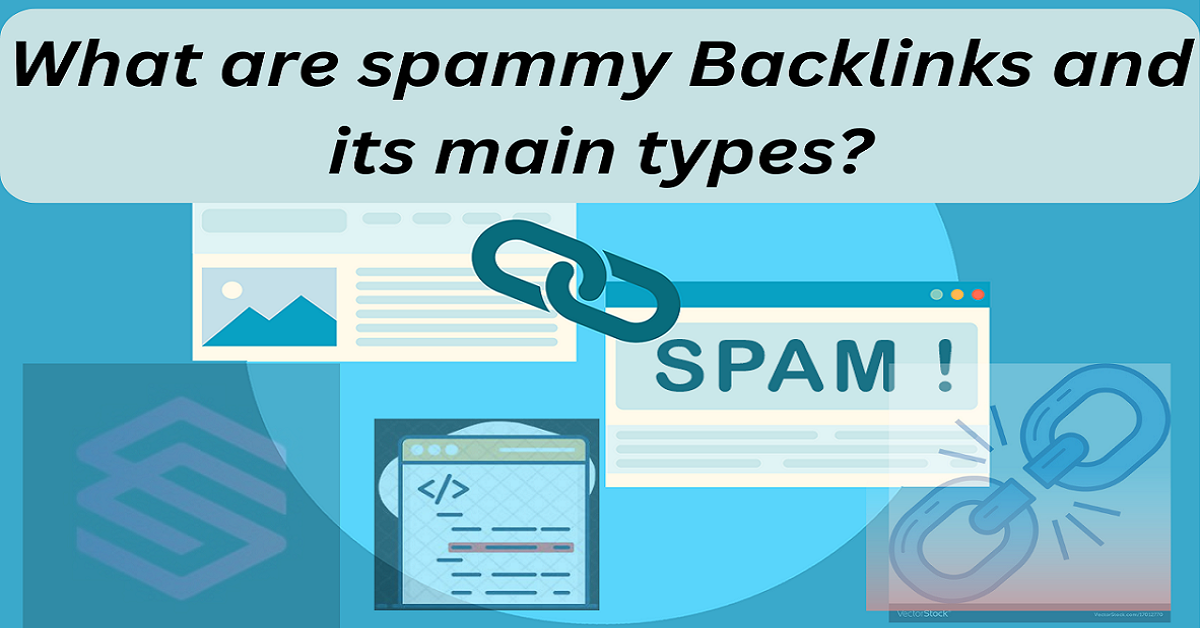In the realm of SEO (Search Engine Optimization), backlinks play a crucial role. In determining a website’s authority and ranking on search engine results pages (SERPs). However, not all backlinks are beneficial. Some can be detrimental and are referred to as “spammy backlinks.” Understanding what spammy backlinks are and how to deal with them is essential for maintaining a healthy online presence.
Table of contents
What Are Spammy Backlinks?
Spammy backlinks are links from low-quality, irrelevant, or suspicious websites that aim to manipulate search engine rankings artificially. These links often violate search engine guidelines and can harm a website’s credibility and ranking.
Importance of Identifying Spammy Backlinks
Identifying spammy backlinks is crucial for several reasons:
- Protecting Reputation: Spammy backlinks can tarnish a website’s reputation and credibility.
- Avoiding Penalties: Search engines like Google penalize websites with spammy backlinks. Leading to lower rankings or even removal from search results.
- Maintaining SEO Performance : Removing or disavowing spammy backlinks enhances overall SEO performance and guarantees sustainable growth
Common Types of Spammy Backlinks
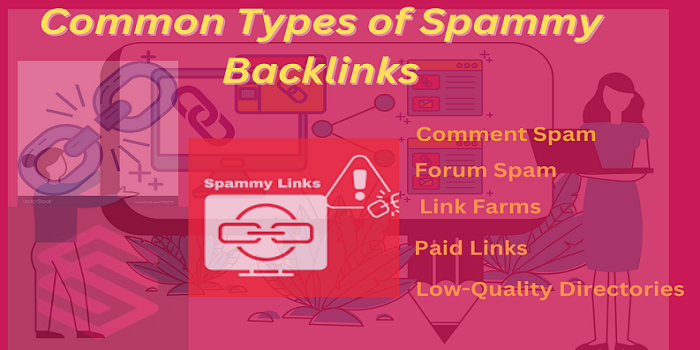
Comment Spam
Comment spam involves posting irrelevant or promotional comments with backlinks on blogs or forums solely for link-building purposes.
Forum Spam
Forum spam includes posting links excessively on online forums without providing valuable contributions to discussions.
Link Farms
Link farms are networks of websites created for the sole purpose of generating backlinks artificially.
Paid Links
Paid links are links acquired through monetary transactions without considering relevance or quality
Low-Quality Directories
Low-quality directories list websites indiscriminately without considering their relevance or value to users.
Risks and Consequences of Spammy Backlinks
The risks and consequences of spammy backlinks include:
| Point | Explanation |
| 1. Decreased Credibility | Spammy backlinks can make a website appear untrustworthy and unreliable to users, diminishing its overall credibility. |
| 2. Penalties from Search Engines | Search engines like Google can penalize websites with spammy backlinks, resulting in lower rankings or removal from search results. |
| 3. Negative Impact on SEO | Spammy backlinks can negatively impact SEO efforts by reducing the website’s authority and trustworthiness, leading to lower organic traffic and visibility. |
| 4. Brand Reputation Damage | Having spammy backlinks can tarnish a website’s brand reputation, affecting how users perceive and interact with the brand. |
| 5. Increased Vulnerability | Websites with spammy backlinks are more vulnerable to security risks and attacks, potentially compromising user data and site integrity. |
| 6. Wasted Resources | Investing time and resources in acquiring and managing spammy backlinks is inefficient and can divert focus from legitimate SEO strategies. |
| 7. Difficulty in Recovery | Recovering from penalties and reputational damage caused by spammy backlinks can be challenging and time-consuming, requiring significant effort and resources. |
How to Identify Spammy Backlinks
Identifying spammy backlinks involves:
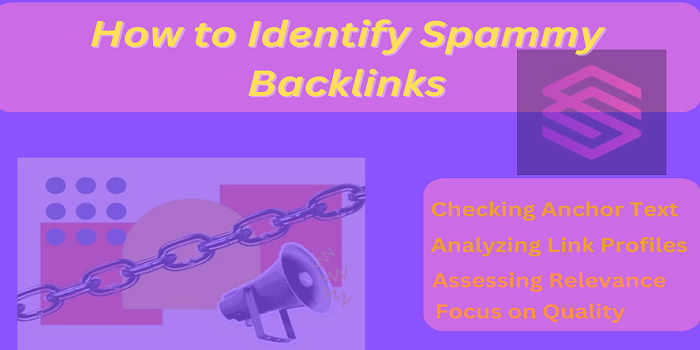
- Analyzing Link Profiles: Utilize tools such as Google Search Console or third-party SEO platforms to delve into the composition of your backlink portfolio. Look for unusual patterns or a high concentration of links from low-quality or unrelated sites, which can indicate spammy backlinks.
- Assessing Relevance: Evaluate the origin of backlinks to ensure they stem from reputable. Contextually relevant sources within your industry or niche. Spammy backlinks often originate from non-related or low-authority sites, lacking the credibility and relevance needed for organic link building.
- Checking Anchor Text: Pay attention to the anchor text used in backlinks. Aiming for a natural mix of keywords, branded terms, and generic phrases. Spammy backlinks often exhibit over-optimized anchor texts with exact-match keywords or irrelevant phrases, which can raise red flags to search engines.
Strategies to Remove or Disavow Spammy Backlinks
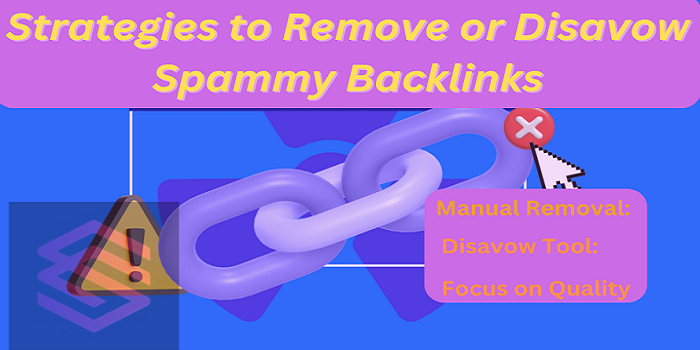
To address spammy backlinks:
- Manual Removal: This involves reaching out to the owners of websites hosting spammy backlinks and requesting them to remove these links. It’s a direct approach that aims to eliminate unwanted links at the source.
- Disavow Tool: Google’s Disavow Tool allows website owners to indicate to Google which backlinks they want to disassociate from their site. This is useful for links that cannot be manually removed and helps prevent them from affecting search engine rankings.
- Focus on Quality: By prioritizing high-quality backlinks from trustworthy and relevant websites, you can improve your site’s credibility and reduce the impact of spammy backlinks. Quality backlinks are more valuable in terms of SEO and user trust.
Best Practices for Building High-Quality Backlinks
To build high-quality backlinks:
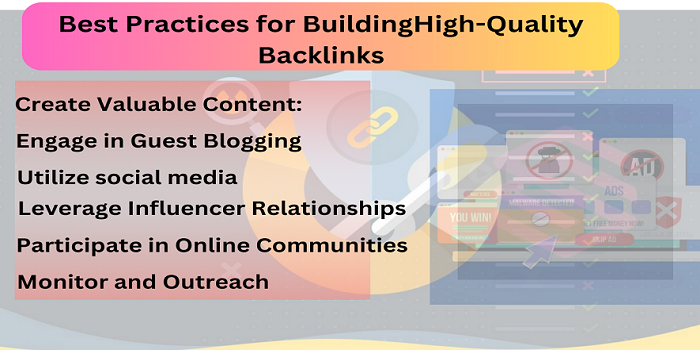
- Create Valuable Content: Develop content that provides unique insights, solves problems, or offers valuable information, attracting natural backlinks from authoritative websites interested in sharing valuable resources.
- Engage in Guest Blogging: Contribute well-researched and relevant guest posts to reputable websites in your industry, showcasing your expertise and gaining backlinks from trusted sources.
- Utilize social media: Share your high-quality content on social media platforms to increase visibility, encourage sharing, and attract backlinks from users and influencers interested in your industry or niche.
- Leverage Influencer Relationships: Collaborate with influencers in your industry to create content or campaigns that naturally generate backlinks from their followers and networks.
- Participate in Online Communities: Engage in forums, Q&A platforms, and industry-specific groups where you can contribute valuable insights, share resources, and earn backlinks from community members and moderators.
- Monitor and Outreach: Regularly monitor your backlink profile using tools like Google Search Console or third-party software, identify spammy or low-quality backlinks, and proactively reach out to website owners to request removal or disavow them if necessary, ensuring a clean and high-quality link profile.
Conclusion
Spammy backlinks pose significant risks to a website’s SEO performance and credibility. Identifying, removing, or disavowing these links is essential for maintaining a strong online presence and avoiding penalties from search engines.
Read More What Are Spammy Backlinks And Its Main Types?
FAQs About Spammy Backlinks
Ignoring spammy backlinks can lead to penalties from search engines, decreased organic traffic, and damage to a website’s reputation.
It’s recommended to regularly monitor your backlink profile using tools. Like Google Search Console to identify and address spammy links promptly.
Yes, disavowing spammy backlinks can help improve SEO performance by signaling to search engines that you don’t endorse these links.
Not necessarily. Backlinks from low-quality websites may not always be spammy, but assessing relevance and authority is essential before considering them beneficial.


